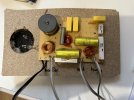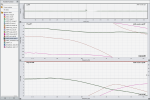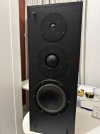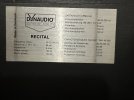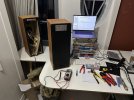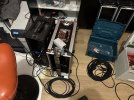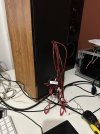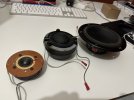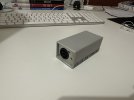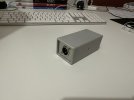To get a better understanding of speakerdesign I started a quest of chancing a set of Dynaudio speakers. (I have 4 of them) Maybe turning it into an active system.
It is a closed cabinet, 3-way system with Dynaudio components:
Tweeter: D52-AF
Middome: D21-AF
Woofer: 17W75
First step is reverse engineering the crossover.
Can somebody identify the components in the crossover, explain which components are in which path and what each component does?
Any help is much appreciated
Picture 1: Crossover (glued to the board)
Picture 2: Components measured with smaart Path: DA->Bryston 2B ->XO -> POL-DI -> AD
It is a closed cabinet, 3-way system with Dynaudio components:
Tweeter: D52-AF
Middome: D21-AF
Woofer: 17W75
First step is reverse engineering the crossover.
Can somebody identify the components in the crossover, explain which components are in which path and what each component does?
Any help is much appreciated
Picture 1: Crossover (glued to the board)
Picture 2: Components measured with smaart Path: DA->Bryston 2B ->XO -> POL-DI -> AD

